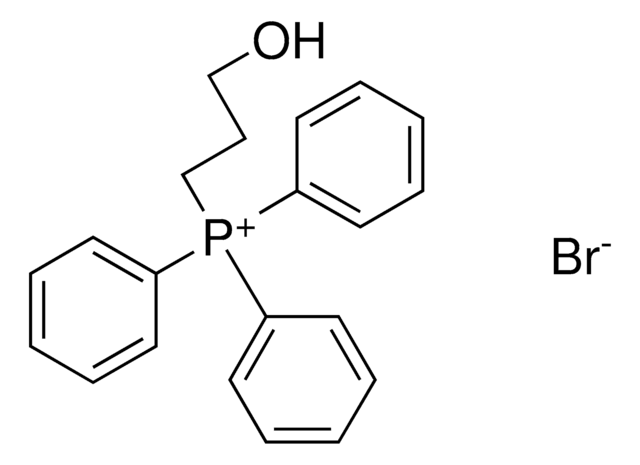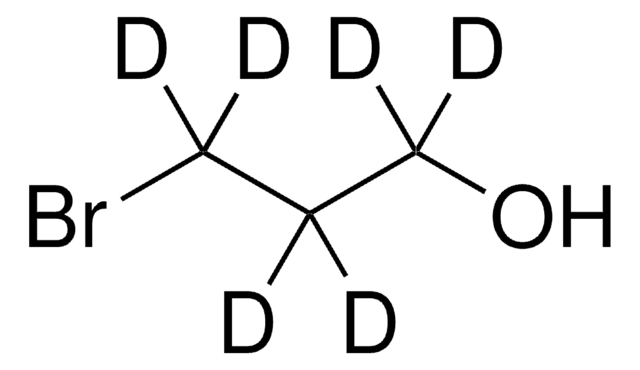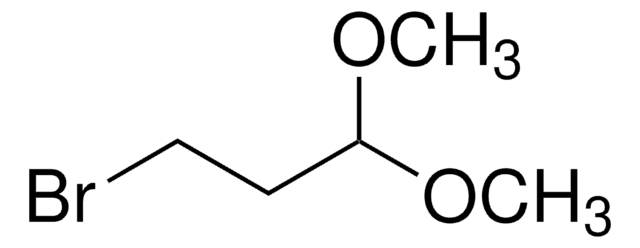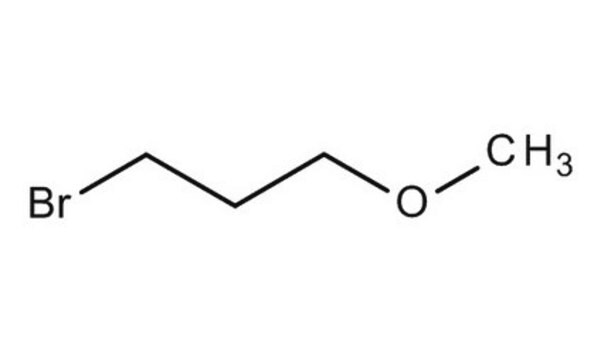167169
3-Bromo-1-propanol
97%
Synonym(s):
Trimethylene bromohydrin
About This Item
Recommended Products
assay
97%
form
liquid
refractive index
n20/D 1.488 (lit.)
bp
62 °C/5 mmHg (lit.)
density
1.537 g/mL at 25 °C (lit.)
storage temp.
2-8°C
SMILES string
OCCCBr
InChI
1S/C3H7BrO/c4-2-1-3-5/h5H,1-3H2
InChI key
RQFUZUMFPRMVDX-UHFFFAOYSA-N
Looking for similar products? Visit Product Comparison Guide
General description
3-Bromo-1-propanol is an electrophile used as a substrate in nucleophilic substitution reactions and in the redox polymerization.
Application
signalword
Danger
hcodes
Hazard Classifications
Acute Tox. 4 Oral - Eye Dam. 1
Storage Class
10 - Combustible liquids
wgk_germany
WGK 3
flash_point_f
149.0 °F - closed cup
flash_point_c
65 °C - closed cup
ppe
Eyeshields, Faceshields, Gloves, type ABEK (EN14387) respirator filter
Certificates of Analysis (COA)
Search for Certificates of Analysis (COA) by entering the products Lot/Batch Number. Lot and Batch Numbers can be found on a product’s label following the words ‘Lot’ or ‘Batch’.
Already Own This Product?
Find documentation for the products that you have recently purchased in the Document Library.
Customers Also Viewed
Our team of scientists has experience in all areas of research including Life Science, Material Science, Chemical Synthesis, Chromatography, Analytical and many others.
Contact Technical Service














